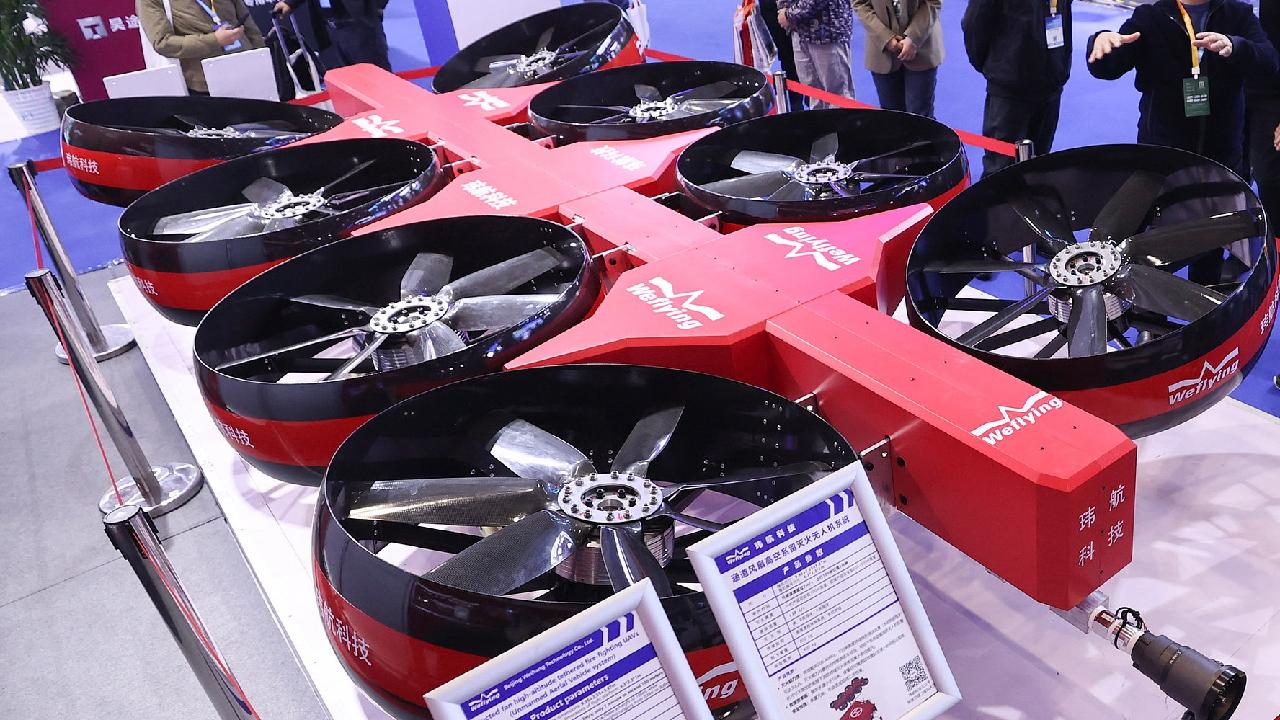Chinese fire and rescue team evaluates smart firefighting gear
Chinese fire and rescue teams are conducting tests on advanced firefighting equipment that utilizes intelligent technology.

During the event, a team of firefighters and rescue personnel from Beijing showcased the latest high-rise firefighting and rescue intelligent equipment in the city’s central business district on Thursday.
The innovative system, developed by KunGe Drones Technology, integrates drones and robots for operational efficiency.
In the event of a fire in a high-rise building, drones are deployed to the scene and secure ropes to fixed points. These ropes create an anchor for robots that carry a water cannon, allowing for high-flow water spraying to quench the flames. The operation of the water cannon is done remotely, facilitating unmanned operation.
This equipment offers firefighters an effective, safe, and quick solution for firefighting and rescue missions in structures up to 200 meters high.
Firefighting and rescue efforts in super high-rise buildings present significant challenges globally. Standard fire trucks are limited in height, with aerial ladder trucks reaching up to 50 meters and the tallest extending to 101 meters.
Consequently, firefighters often struggle to access the upper levels of super high-rise structures. The innovative system allows water to be transported up to approximately 200 meters, with a climbing robot equipped to carry a water cannon that delivers a flow of 5 liters per second and reaches up to 40 meters in spray distance.
According to the system's developers, the entire setup can become operational within three minutes of arriving at the fire site, enabling water to be sprayed to extinguish flames within nine minutes. "This enables firefighting operations within the crucial time," explained Dong Fulong, R&D manager at KunGe Drones Technology.
Additionally, the smart-controlled water cannon features adjustable spray angles. The platform is designed with intelligent controls, providing a vertical rotation range of 130 degrees and a horizontal rotation range of 180 degrees. Experts note that this enhances the precision of firefighting efforts while minimizing risks for firefighters operating at heights.
Dong mentioned that firefighters and rescuers from various Belt and Road partner countries, including Indonesia, Malaysia, and Iran, have expressed substantial interest in the showcased system at CIEME.
"We would like to further promote the system to more Belt and Road partner countries while helping them to solve firefighting difficulties in high-rise buildings," Dong added.
On October 19, 2023, the National Fire and Rescue Administration, under the Ministry of Emergency Management, convened experts to evaluate and verify the system’s effectiveness.
Experts concluded that the system offers a novel solution for addressing fires in high-rise buildings, tackling challenges such as the limitations of high-lift fire trucks, restricted operational areas, and difficulties in combating fires both inside and outside a building. The system was incorporated into the administration's major scientific research plan in 2019.
Emily Johnson contributed to this report for TROIB News
Discover more Science and Technology news updates in TROIB Sci-Tech












